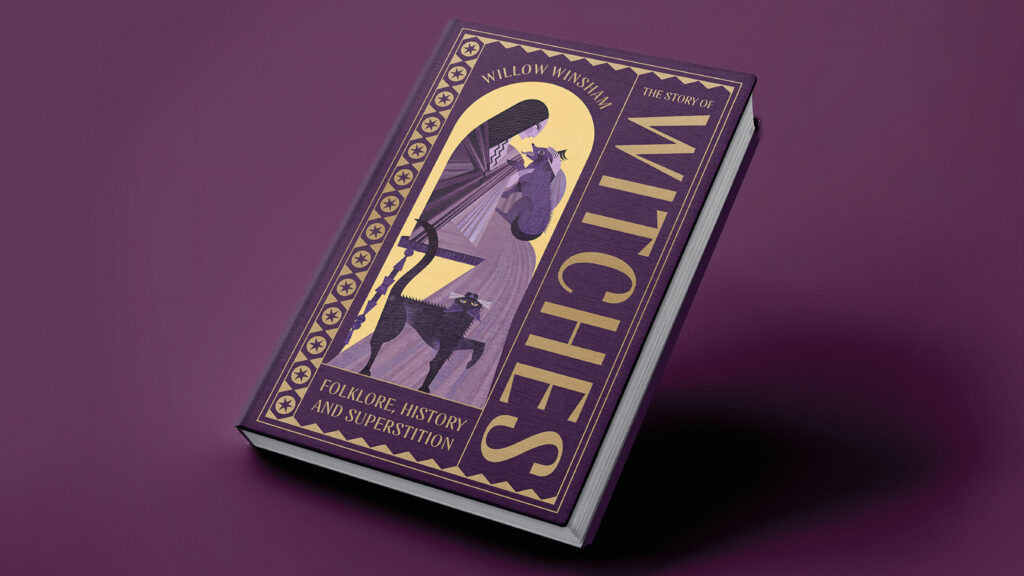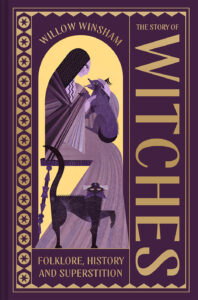How to try a woman for witchcraft

Suspecting a person of witchcraft was one thing, but how was it possible to find proof in order to bring them to justice? Various methods of discovery developed over the period of the witch trials, used alike by those in authority, by self-professed witchfinders who travelled from place to place rooting out witches, and by neighbours. Read on to discover some of the weird and gruesome ways that people would use to try a woman for witchcraft, taken from The Story of Witches, by Willow Winsham, publishing 13th March.
Words by William Winsham.
Swimming a Witch
One of the most popular ways of identifying a witch was to ‘swim’ them. Although finer details could vary, the basic premise was as follows: the suspected witch was bound – right thumb to left big toe and vice versa – and thrown or lowered into a body of water such as a lake or pond or even, in the case of Finnmark, the sea. If they sank, they were innocent, and would hopefully be pulled out before they drowned. If they floated on the surface of the water, however, they were a witch and guilty. Often, the suspect was introduced to the water not once, but three times, just to be on the safe side.

Witch Pricking
When a witch promised themselves to the Devil, it was said that they were given a physical mark. According to popular belief, such marks were insensible to pain and would not bleed, even when pricked with a sharp object. The idea behind pricking a witch was simple yet deadly: if a mark was pricked and the suspect didn’t show pain, then they were guilty. The pricking process was neither a quick nor a comfortable one. In front of a watching crowd, a suspect would be stripped and shaved completely, before being subjected to every inch of flesh being investigated. Any mark or blemish down to the slightest discoloration was considered suspect, and each was pricked in turn, sometimes several times just to make certain, the witch watched closely for any sign of reaction.

Waking and Walking
It was not just physical signs that were necessary to condemn a witch, and great lengths were taken to extract a confession from the accused. It became quickly apparent that a confused, sleep-deprived suspect would more readily agree to what questioners wanted, and keeping the accused awake until they confessed to their supposed crimes became a popular method of establishing guilt. Keeping someone awake for a long stretch of time was not as easy as it sounds, and there were various methods employed to keep the suspect from sleeping. A suspect could be made to sit cross-legged on a stool or table, relentlessly prodded awake if they started to droop.

Weighing against a Bible
One of the easiest tests to ‘pass’ was that of being weighed against the church Bible. The accused – often naked – would be placed in one side of the scale, and the Bible in the other. If the witch was lighter than the Bible, then they were guilty. If they were heavier, which in most cases they were – in the first attested case of weighing a witch in England, the bible weighed about 5.44kg (12lb), and in general church Bibles tended to weigh at a maximum 10kg (22lb), the weight of a one-year-old boy – then they were innocent.Weighing against the Bible was a particularly popular method of proving a witch in England and North America during the 18th and 19th centuries, and was often carried out after, or in place of, being swum. Weighing a witch was also one of the more humane methods of identification compared with others, and although it was potentially practised earlier, it didn’t come tothe forefront of witchcraft cases until many of the other, more violent, tests had been discontinued.

Making a Witch Cake
The precise origins of this intriguing method of witch detection are shrouded in mystery, with even the details of the practice not always clear, as they varied from place to place. The basic idea was as follows: urine from the bewitched victim was mixed with flour – and sometimes other ingredients – before being made into a cake and cooked over a fire. The resulting mixture could then be variously buried, burned or fed to an animal, in order to either reveal the identity of the witch or to break their hold over a victim.
The Story of Witches: Folklore, History and Superstiton by Willow Winsham is available for pre-order now both online and from all good booksellers.
Illustration banners by Katie Ponder.


